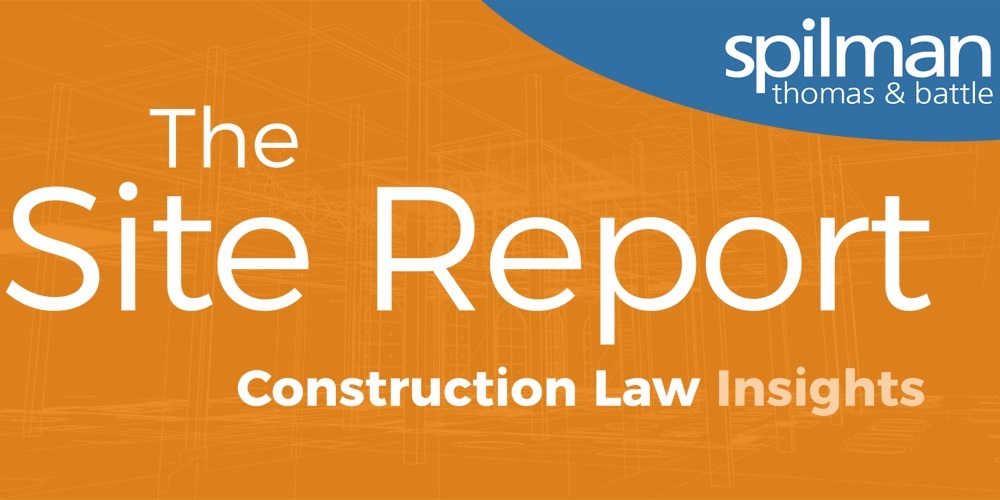Article
Resources
Article
Bridges, Natural Disasters and Liability - The Skanska Decision (Part 1)

What follows is a cautionary tale for anyone involved who fails to follow a natural disaster preparedness plan. Taking short cuts and failing to follow agreed upon emergency preparedness plans are a recipe for disaster. While the litigation we analyze in this article stems from bridge construction in Florida, the lessons learned from this real situation are applicable all across the country.
The tale begins with the Florida Department of Transportation (“FDOT”) contracting with Skanska USA Civil Southeast Inc. and Skanska USA Inc. ("Skanska") to build two new spans for the Pensacola Bay Bridge ("Bridge"), while simultaneously demolishing the old bridge. In order to complete this project, Skanska employed a fleet of 55 construction barges. In September 2020, Skanska had just completed the new Pensacola Bay Bridge between Pensacola, Florida and Gulf Breeze, Florida. The three mile long Pensacola Bay Bridge is the primary route between Pensacola and Gulf Breeze.
In mid-September 2020, Hurricane Sally was bearing down on the Gulf Coast. Skanska, believing that Sally would make landfall 200 miles to the west despite Pensacola being in the cone of Sally's track, wanted to avoid the downtime associated with moving its 55 construction barges pursuant to its hurricane preparedness plan.1 However, Sally tracked east. According to the plaintiffs, Skanska had not followed its hurricane preparedness plan and did not have adequate manpower on site, and it was not able to properly secure the barges. Sally ultimately made landfall 30 miles away from Pensacola in nearby Alabama. Skanska's failure to move its barges to Butcherpen Cove when winds exceeded a sustained 58 miles per hour, as set forth in the hurricane preparedness plan, resulted in 27 of its construction barges breaking their moorings. Barges hit both the old and the new Bridge, which caused a large chunk of the deck on the new Bridge to collapse into the Bay, and a number of piers on the new Bridge to be damaged, along with barges coming aground and damaging various sea walls along the shore. The decision not to adhere to the hurricane preparedness plan resulted in Skanska incurring millions of dollars in costs repairing the new Bridge. Because the old bridge had been decommissioned, there were no plans to repair the damage to the old bridge. Consequently, the damage to the new Bridge caused the only direct route between Pensacola and Gulf Breeze to be closed for nine months.
Following Hurricane Sally, hundreds of lawsuits were filed in Florida state court by residents and business owners who suffered property damage as a result of Skanska's barges coming aground, and who suffered economic damages as a result of the new Bridge having to be shut down for repairs. In response to these suits, Skanska took the unique position that the barges were vessels on a U.S. waterway, and asserted that maritime law applied. Accordingly, Skanska filed an action in federal court pursuant to the Limitation of Vessel Owner's Liability Act, 46 U.S.C. § 30501, et seq. (the “Limitation Act”) in an effort to limit its liability in the state court actions. By filing this action, Skanska stayed, or halted, the state court actions until the federal action was resolved. The reason that this action by Skanska was so novel was because the Limitation Act is usually used by vessel owners to protect themselves against injuries suffered by crew members or passengers during a voyage. But Skanska did not have sufficient insurance coverage to cover the likely tens, if not hundreds, of millions of dollars in damages asserted in the state court actions, so Skanska had to make a novel and creative argument for how the Limitation Act applied to this situation.
The Limitation Act allows a court to either exonerate the vessel owner from liability, or to limit the vessel owner's liability to the value of the vessel at the end of the voyage. In Skanska's lawsuit, this had the potential to limit Skanska's liability in the state court actions to the value of the five barges that caused the damage to the new Bridge, for a total liability of approximately $1.5M dollars. However, the Liability Act does not apply to limit a vessel owner's liability if the vessel owner (1) had "privity and knowledge" on an unseaworthy condition: (2) participated in the negligent act causing the injury; or (3) knew or should have known of the acts or omissions leading to the injury.
When evaluating a Liability Act claim, a two-prong analysis is applied. The first prong is to determine if the vessel owner's negligence caused the accident. Liability is established only where the vessel owner's negligent acts were a contributory and proximate cause of the accident. If the vessel owner is free from any contributory fault, he is exonerated from all liability. If the vessel owner's liability is at least partly the cause of the accident, then the second prong of the analysis is examined. The second prong addresses the issue of limiting the vessel owner's liability. If the vessel owner is successful in showing a lack of privity or knowledge, he remains liable but is able to limit that liability to the value of the vessel(s) involved in the accident, and the available funds are distributed equitably among the injured parties. In this case, there were five barges valued at a combined $1.43M that were at issue. If the court sided with Skanska, and limited its liability to the value of the five barges, that amount would be distributed to the 1,000 plaintiffs in the state court actions who were seeking purely economic damages as a result of the Bridge being closed for nine months for repairs.
In October 2021, the court held a four-day bench trial to determine Skanska's liability pursuant to the Limitation Act. Skanska's argument was that its decision on where to secure its barges during Hurricane Sally demonstrated reasonable care, so it was not negligent. Skanska took this position because if the court determined that it reasonably prepared for the storm, then it could not be held liable for the damaged caused by the errant barges. However, the court held that Skanska's actions were not reasonable and that it was negligent because it failed to follow its hurricane preparedness plan. Having found that Skanska was negligent, the court turned to the second prong of the test regarding the limitation of liability. The court found that Skanska's negligence was entirely the result of its failure to take reasonable actions to protect the barges from Hurricane Sally. Consequently, because Skanska could not establish any lack of privity or knowledge, the court held that Skanska's liability could not be limited to the value of the barges pursuant to the Limitation Act. Skanska filed an appeal of the federal court's ruling with the Eleventh Circuit Court of Appeals, arguing that the District Court improperly kept out exculpatory evidence that would have shown that Skanska acted reasonably under the circumstances. As of the time of this article, Skanska's appeal is still pending.
Stay tuned to the next edition of The Site Report for a discussion about mistakes Skanska made in the federal action, the status of Skanska's appeal, and the 1,000 individual plaintiffs' lawsuits pending in in state court.
There are several important takeaways from this incident, including:
- If there is a project-specific preparedness plan in place for a natural disaster, follow it. Do not disregard the plan simply because it is inconvenient. If you are a subcontractor on a project and the general contractor is not following the submitted and approved preparedness plan in advance of a known natural disaster, that does not absolve you from liability. If the plan needs to be changed, go through proper channels and get proper approvals, including written change orders, before you change the plan. If Skanska had followed the hurricane preparedness plan it submitted to FDOT, then the federal court likely would have found that Skanska was not negligent and exonerated it pursuant to the Limitation Act.
- Cutting corners to save a few dollars now can lead to a big problem later that will cost you far more than if you just taken the proper actions at the time. Skanska wanted to save money by continuing to work up until the storm hit and not incur the cost related to the downtime associated with having to move the barges. The result of this short cut is protracted litigation and possibly tens, if not hundreds, of millions of dollars in damages and fines.
- Be aware that the need to make novel arguments to defend against complex construction issues causes expensive legal bills. Novel arguments require significant time to synthesize, research, draft, and argue. Novel arguments indicate that things went very wrong on the project, and that conventional defenses are not available. Where there is smoke, there is fire, and courts are also less likely to agree with a novel argument despite all of the work put into them because they know that if conventional defenses are not available that the facts probably are not on your side. That was the case with Skanska and the Limitation Act. Skanska had to raise a novel argument because it did not have a conventional defense against why it failed to adhere to the hurricane preparedness plan. As we saw in this matter, the court was not swayed by this novel argument. If Skanska's appeal is not successful, it now has a federal court's ruling finding it negligent to contend with when it tries to defend against the numerous state court actions.
1The facts reported in this article are solely those facts reported in the resultant lawsuits and publicly available news articles related to the Bridge project.


